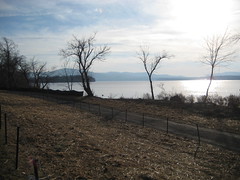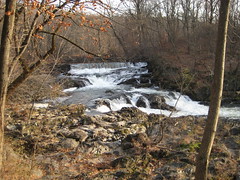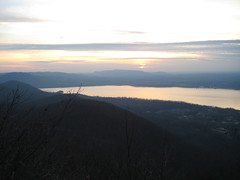- In addition to including students from lower-class backgrounds who are aiming at upward mobility, the New Outsiders also include middle- and middle-upper-class students concerned about downward mobility
- A tight job market that increasingly requires graduate degrees, although law school is looking less desirable as "firms are saturated" (p. 286)
- Grade inflation, grade-grubbing, and cheating
- Participation in extracurriculars, including Greek life, because it looks good on the resume
- High levels of student anxiety, coupled with "partying" that seems more like the pursuit of fun than actual fun
- "Today's New Outsiders seem content to remain emotionally and economically dependent on their parents" (p. 271)
Tuesday, December 18, 2012
Campus Life
I recently finished Helen Horowitz's Campus Life, a history of the campus life of the American undergraduate. The book was published in 1987, so as another scholar mentioned via Facebook, it's not exactly up-to-date. Certainly, there have been changes in college life in the interim 25 years: Residence hall life is considerably plusher, the internet has changed life on and off campus, and the preppy look she describes as ascendant in 1983 has contracted to its New England roots. But what struck me forcefully is how little the underlying college culture has changed.
Horowitz breaks students into three categories: Joe Colleges, who tend to come from the upper strata, in college to have a pleasant social experience, and are big joiners; the outsiders, who either can't afford, are refused, or don't wish to "join" and instead focus on their schoolwork; and the rebels, either political or artistic, who had their moments of glory in the 1930s and 1960s. At the end of the book she describes the New Outsiders, ascendant in the 1980s, who are focused on their grades, albeit for vocational reasons rather than as mere signifiers of learning. To the extent that some of them are joiners, it's because the activity will help them get ahead.
Sound familiar? Here's more:
Sunday, December 16, 2012
Mount Beacon night circular hike
 Yesterday I did a nice hike with the Ramblers along the eastern portion of the Hudson. As you probably already know, I am a huge fan of the Hudson, and the hike was much more scenically interesting than Harriman State Park. We started by taking the Metro North train to Beacon and following a greenway along the water. We walked along abandoned train tracks, following Fishkill Creek.
Yesterday I did a nice hike with the Ramblers along the eastern portion of the Hudson. As you probably already know, I am a huge fan of the Hudson, and the hike was much more scenically interesting than Harriman State Park. We started by taking the Metro North train to Beacon and following a greenway along the water. We walked along abandoned train tracks, following Fishkill Creek. These falls are part of an old dam complex, the ruins of which we walked over. A dead giveaway is the unnatural evenness of the falls. The hike along the river thus far has been nearly flat, and it will stay that way a little longer as we head through the town of Beacon. But then you see Mount Beacon ahead of you.
These falls are part of an old dam complex, the ruins of which we walked over. A dead giveaway is the unnatural evenness of the falls. The hike along the river thus far has been nearly flat, and it will stay that way a little longer as we head through the town of Beacon. But then you see Mount Beacon ahead of you. That clear line up the mountain is what used to be an incline railway. There was a casino at the top, as well as summer homes. The trail mostly follows that line, which means it is a little steep. Most of the 1500 feet of elevation gain on the hike was all right here in one shot.
That clear line up the mountain is what used to be an incline railway. There was a casino at the top, as well as summer homes. The trail mostly follows that line, which means it is a little steep. Most of the 1500 feet of elevation gain on the hike was all right here in one shot.  The ruins of the gearhouse for the funicular are at the top, along with spectacular views of Beacon and the Hudson River. At this point it was getting dark, not to mention chilly. We had elected to do this as a night hike, meaning that now the sun was setting. The trail we descended by was much gentler than our uphill route (excluding a slight off-trail diversion) and mostly followed an old road.
The ruins of the gearhouse for the funicular are at the top, along with spectacular views of Beacon and the Hudson River. At this point it was getting dark, not to mention chilly. We had elected to do this as a night hike, meaning that now the sun was setting. The trail we descended by was much gentler than our uphill route (excluding a slight off-trail diversion) and mostly followed an old road. We descended to the town of Beacon and did a short tour of some of the better Christmas lights before catching the train back to Manhattan. All told, we hiked 10.3 miles.
We descended to the town of Beacon and did a short tour of some of the better Christmas lights before catching the train back to Manhattan. All told, we hiked 10.3 miles. Tuesday, December 11, 2012
The Nutcracker
As I child, I read A Very Young Dancer many times. The book was part of a series by photographer Jill Krementz. Each one followed a ten-year-old girl* who was outstanding in something like dance, gymnastics, horseback riding, etc. The star of A Very Young Dancer was a ballet student here in New York, and she played the part of Marie in the New York City Ballet's Nutcracker.
I've seen The Nutcracker performed several times, but never with Balanchine's choreography, and, of course, never in New York - until tonight.
What fascinated me was how little the production has changed during my lifetime - the book is as old as I am. Of course, the costumes aren't the same ones worn all those years ago, but many of them still look very much the same, and the sets are nearly identical. As far as I can tell, the hallway is precisely the same, down to the reflection in the mirrors. Perhaps it is still the same set. The continuity is eerily exaggerated by the fact that boys haircuts have come around full circle to what was being worn in the mid-1970s.
It was a very deja vu experience. A good show, of course, but knowing it doesn't get updated means I won't be in a hurry to see it again.
*A Very Young Circus Flyer followed a boy.
I've seen The Nutcracker performed several times, but never with Balanchine's choreography, and, of course, never in New York - until tonight.
What fascinated me was how little the production has changed during my lifetime - the book is as old as I am. Of course, the costumes aren't the same ones worn all those years ago, but many of them still look very much the same, and the sets are nearly identical. As far as I can tell, the hallway is precisely the same, down to the reflection in the mirrors. Perhaps it is still the same set. The continuity is eerily exaggerated by the fact that boys haircuts have come around full circle to what was being worn in the mid-1970s.
It was a very deja vu experience. A good show, of course, but knowing it doesn't get updated means I won't be in a hurry to see it again.
*A Very Young Circus Flyer followed a boy.
Monday, December 10, 2012
Injury update
I haven't been making it to many classes and am trying to practice at home. So I do my PT exercises, some stretches - both related, like supine twists, and unrelated, like hamstring stretches, because I always have tight hammies - and simple moves such as four of the five basic kicks.* (Martelo de solo puts too much body weight on a straight arm.) I've been focusing on armada, because Mestre has broadly hinted that would be a good idea, but I also added meia lua de compasso back in. It turns out that if I do it with perfect form, it doesn't hurt. What that means is I suck it up and do it with perfect form.
Which reminds me of this.
*In Quintal, these are considered to be meia lua de frente, queixada, armada, meia lua de compasso, and martelo de solo. In Angola Palmares, the list I was taught omitted martelo de solo but added bensao and martelo. In case you care.
Which reminds me of this.
*In Quintal, these are considered to be meia lua de frente, queixada, armada, meia lua de compasso, and martelo de solo. In Angola Palmares, the list I was taught omitted martelo de solo but added bensao and martelo. In case you care.
Thursday, December 6, 2012
Injured!
My left arm had been hurting ever since my flu shot, but it got particularly painful after one acrobatic capoeira class. As a side effect, the muscles all around my shoulder blade seized up in a death grip. I finally gave in and went to the doctor, who sent me off to physical therapy.
It turns out I suffer from a weak serratus muscle (the muscle that stabilizes the shoulder blade) and a small impingement in the rotator cuff. So the therapist has me on home exercises as well as in-office visits. She also has me off of any exercise that puts my weight in my hands, or that hurts.
This means no yoga class (there are plenty of moves I can do at home, but a class will have too many poses that rest on the arms) and highly modified capoeira classes. No cartwheels, no kicks or escapes that put my weight on my arms. I do cheat a little occasionally and put my weight on my good arm, though. This means I have to stick to the easier classes, as the more advanced classes get into too many sequences that use the arms or outright acrobatics.
I hate hate hate being injured and not being able to do things, especially when they are things my body is capable of, and even more when they don't hurt, such as queda de rins - I don't have pain on bent arms. I feel like, by the time I recover, I will have lost so much strength. If I weren't in the thick of final exams, there would be lots of hiking to at least get out my energy.
I'm not a fool. I try to be a good patient, because I don't want to get hurt worse. And I'm relearning how to use my shoulder blades (who knew you could use them wrong?)
Maybe at least I can improve my armada during this period?
It turns out I suffer from a weak serratus muscle (the muscle that stabilizes the shoulder blade) and a small impingement in the rotator cuff. So the therapist has me on home exercises as well as in-office visits. She also has me off of any exercise that puts my weight in my hands, or that hurts.
This means no yoga class (there are plenty of moves I can do at home, but a class will have too many poses that rest on the arms) and highly modified capoeira classes. No cartwheels, no kicks or escapes that put my weight on my arms. I do cheat a little occasionally and put my weight on my good arm, though. This means I have to stick to the easier classes, as the more advanced classes get into too many sequences that use the arms or outright acrobatics.
I hate hate hate being injured and not being able to do things, especially when they are things my body is capable of, and even more when they don't hurt, such as queda de rins - I don't have pain on bent arms. I feel like, by the time I recover, I will have lost so much strength. If I weren't in the thick of final exams, there would be lots of hiking to at least get out my energy.
I'm not a fool. I try to be a good patient, because I don't want to get hurt worse. And I'm relearning how to use my shoulder blades (who knew you could use them wrong?)
Maybe at least I can improve my armada during this period?
Subscribe to:
Posts (Atom)